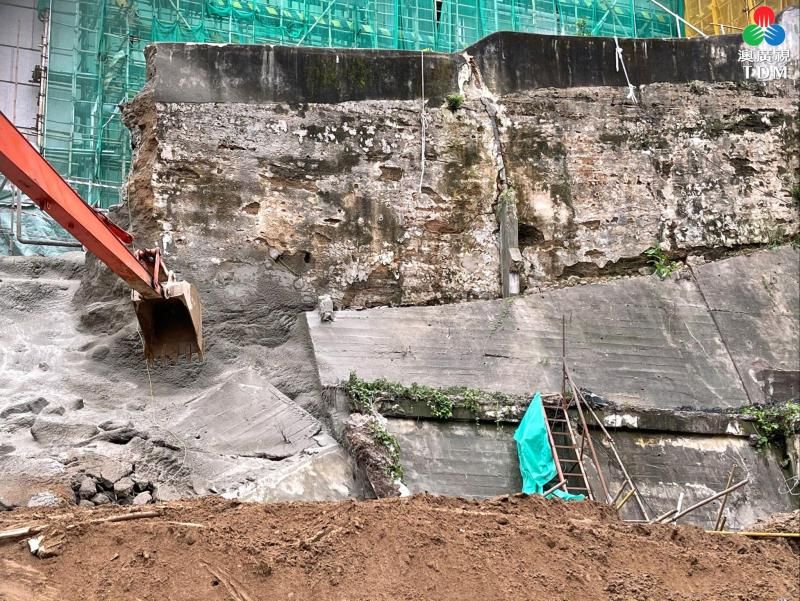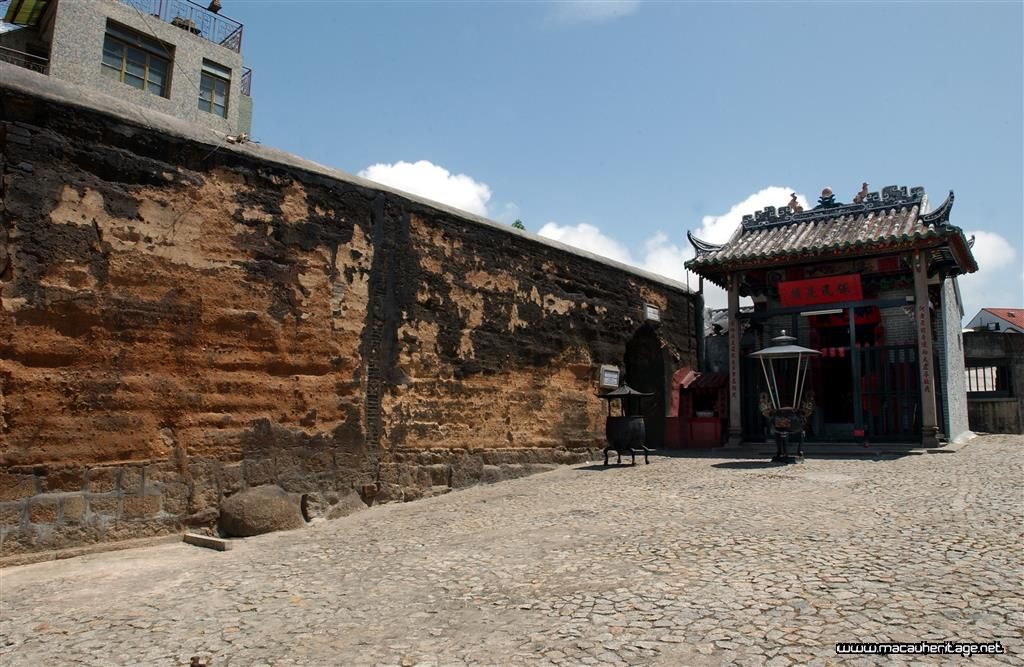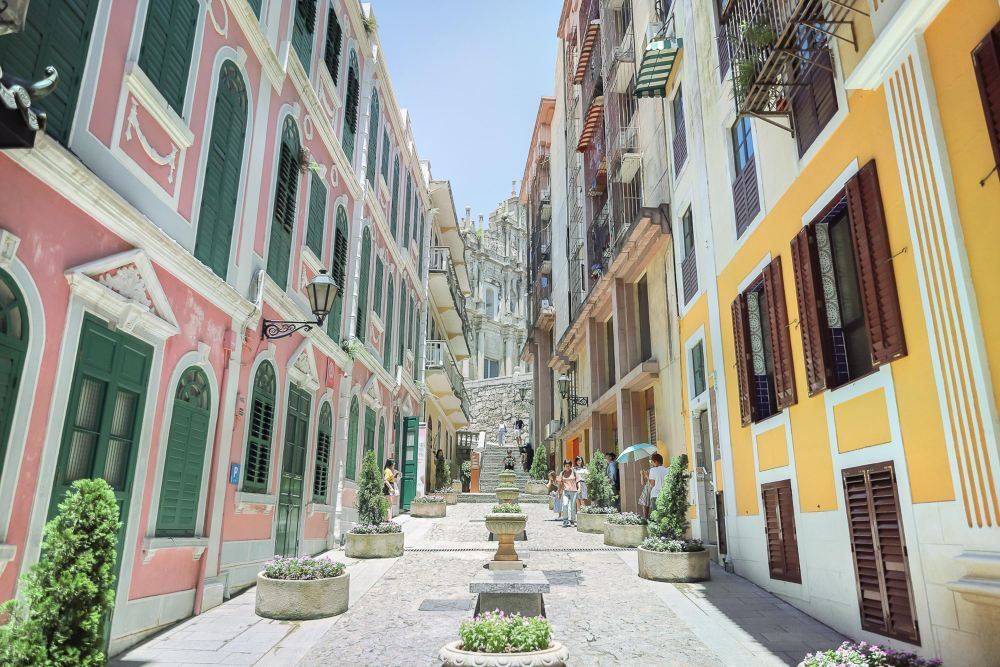After the Fall of the Walls: The Politics and Tensions of Heritage and Conservation
Author: Far East Fishing Lang (Trying to use social science methods to study the two sides of history is not human)
Macau has been plagued by misfortunes in the past month: in addition to the haze caused by the epidemic, a catastrophic accident also occurred at a local historical site. The incident occurred at a construction site adjacent to Garth Lan Gardens where the ancient city wall from the 17th century was excavated. A landslide caused more than one-third of the city wall to collapse at the beginning of the month . After the collapse, the government further decided to demolish another ten meters of the city wall on the grounds of "public safety" . As a result, the old ruins, which were originally 50 meters long, were suddenly reduced to about two-fifths of their original length within a month.

In addition to once again highlighting the "always-occurring" problems in Macau, including who is responsible among government departments, and the hasty approval to start construction without detailed geological and historical surveys, the even more ironic thing is that even The city wall has long been included in the government's "Real Estate Assessment" list, and theoretically received a certain degree of institutional protection, but in the end it could not escape being destroyed.
The end of the ancient city wall is in sharp contrast to its status as one of the important historical "relics" of Macau. For "us", the city wall is a "living record" of Macau's history and has cultural and even emotional value to the local community. Therefore, "we" expect that it will require a certain degree of protection so that it can survive in the future.
Although the above definition seems to be natural, if we examine it in depth, it turns out that the relationship between "Heritage" and "Preservation" is not so clear-cut. Taking advantage of the "city wall incident", in this article, I will use the research of cultural relics scholar Trinidad Rico in 2015 and combine it with the local context to examine the complex meaning behind using "relics" to refer to specific things.
Ruins are dangerous
The key to why "relics" are "relics" is of course related to their long past. As remnants of the "old era", ruins have experienced various conditions that are different from their "original appearance" due to various man-made and natural influences. Although the ruins of bricks and tiles may be inconspicuous, once things become "relics", these differences that were originally ignored immediately become very important.

The reason for this is that "relics" itself is also a classification system. By rating buildings against a series of indicators, these buildings are assigned attributes of their "fragility" and are further classified into the same system. As a result, a system that includes different levels (such as "risk" and "endangered") and treats "risk" as a "relic" for judging things came into being.
Therefore, when a building becomes a "relic" and thus acquires certain "objective" attributes, it will further derive a specific cultural right, and it can "legitimately" claim that it should be protected.
We can imagine a counter-example: if the city wall itself is not "real estate" as assessed by the government, but is just a pile of bricks on a hillside, then both the public's attention and the government's conservation responsibility will be reduced because of its "nameless and unknown nature". "Surname" and ignored, may have long been buried by the ruthless hands of bulldozers. It is precisely because it has become something that "should" be conserved that the impact on society is so obvious.
Seemingly objective but actually subjective
Although the heritage system that classifies things according to "risk" seems straightforward, classifying and quantifying the degree and urgency of their need to be protected, it is so "objective and clear" and "applicable everywhere." ” attributes are only part of the story.
Because when we say that a certain relic is at "risk," we are essentially referring to a phenomenon that occurred in a specific time and space context. In actual operation, the evaluation process inherently includes various subjective judgment elements.
As mentioned above, when the government decided to demolish a part of the city wall due to "public safety" risks, it involved a series of issues related to the risks. For example, what exactly does the "risk" include (the safety of residents in adjacent buildings? A Is the construction site inaccessible to passers-by safe? Under what circumstances can it be called a risk (only after a landslip?)? And the degree of risk (requires immediate disassembly?) etc.
These issues involve, in fact, a huge space for subjective judgment.
To make things even more complicated, the way these questions are answered is further affected by various political and cultural factors. If we look back at the past and present of Macau's "city wall incident", we can find that even as early as 2015, the city wall has become a member of the "real estate" list, but for a long period of time, the ancient city wall and buildings The construction site can be described as "harmonious coexistence", and the risks were either non-existent (perceived) at the time, or were at such a level that no action was required.
Only when the walls collapsed due to "external forces" did "risk" resurface (although for the government, the perception of "risk" and the specific actions to deal with the risk happened to be in opposite directions).
Therefore, the example of the city wall tells us that ruins are inherently political products. On the one hand, although Macao does have a system for the protection of heritage sites, in terms of specific implementation, the "usual habits" of Macao's bureaucracy make the system superficial, and instead make the risk a stage for mutual negation between departments. .
On the other hand, what is quite paradoxical is that, as Zhihui has discussed in a previous article , the key reason why the city wall can be regarded as a "relic" is certainly related to its long history. However, the reason why Macau’s “long” history is so valued is closely related to the political and economic implications of “relics” in Macau.
a specific view of conservation
If the concept of "relics" already has a certain degree of complexity, then the concept of "conservation" is actually not overly generous. Taking the city wall as an example again, when we say that the city wall needs to be "conserved", we actually mean that the original appearance of the buildings in the old era has been damaged to varying degrees due to various factors. Therefore, how to maintain or even restore its "original" appearance as much as possible is an urgent priority at the moment.
But "maintaining the original appearance" is actually just one way to reflect the value of heritage sites. In the discussion of heritage conservation, there is also another completely different view, which is to regard artificial restoration as an act of destroying heritage. From this point of view, the reason why relics are valuable is precisely because of the combination and stacking of various man-made traces at different points in history, creating "relics" as carriers of "recording" the past. Artificially "restoring" the ruins to their original state will cause irreversible effects on the ruins.
An example that comes to mind for the author, which may not necessarily fit the background of the above discussion, but is quite interesting, is the "graffiti group" in Love Lane next to the Ruins of St. Paul's. As a member of the same class of assessed real estate, Love Alley may be because the street name is quite "romantic". Many people have "left their names" here to commemorate it. Over time, a graffiti wall gradually formed in the corner of the street.

There is no doubt that these "graffiti" have destroyed the original appearance of the alley, but from another perspective, these "love" records just reflect the meaning of the street name (and the true meaning of its original meaning - "Suffering Alley", I After all, many of the relationships among them have long expired), which unexpectedly adds to the fun of stopping and watching when visiting.
From the above examples, we can see that even when facing the same ruins, two ways of viewing the ruins in conservation discourse can actually lead to completely different conclusions. The reason is that "conservation" itself is a concept that contains many ambiguities and values, and these values and concepts are just like "relics" and are affected by specific time and space backgrounds.
The values that seem “taken for granted” to us today have not always been so.
Not once and never again
If the meaning of "relics" and "conservation" can be properly understood only by returning to the local context, then the situation in Macau can be described as a combination of two extremes:
A government that tries to fix things but backfires, and old buildings that have a long history but are not taken seriously.
Although the fate of the remaining city walls is still unknown, Macau is about to experience its first typhoon of the year at the time of writing, and I hope it will not be the last straw that breaks the city walls.
#Number of articles: 1️⃣1️⃣8️⃣
👉Macau Learn Universe 16
Like my work? Don't forget to support and clap, let me know that you are with me on the road of creation. Keep this enthusiasm together!

